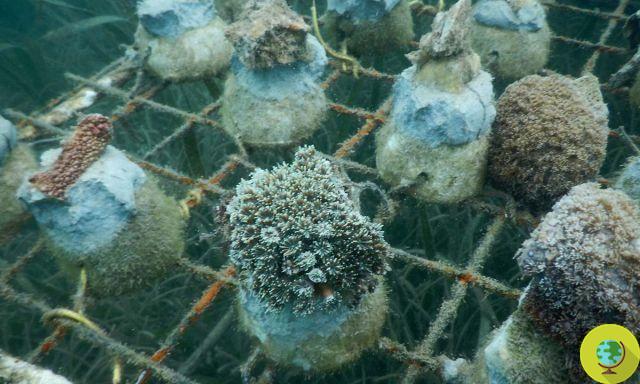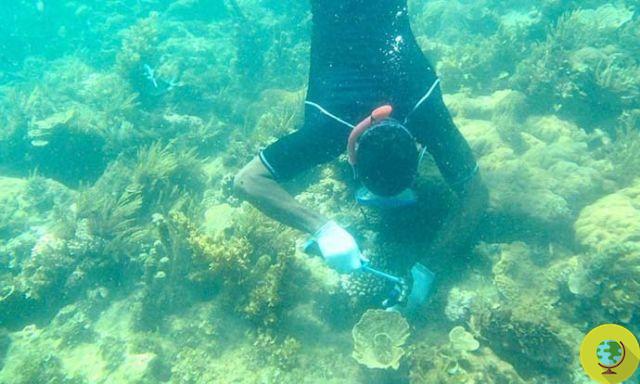A coral reef restoration project, carried out mainly by women on a small island in Kenya, has achieved surprising results. Fish of all kinds as well as lobsters and octopuses have returned to populate the sea!
Un coral reef restoration project, made mainly by women on a small island in Kenya, it has achieved amazing results. Fish of all kinds as well as lobsters and octopuses have returned to populate the sea!
Three years ago, the coral reef found along the Kenyan coast was almost completely destroyed in some areas (60-90% coral is lost). The rise in sea surface temperature had triggered devastating coral bleaching episodes (for the fourth time in less than two decades) and, as a result of this, a severe decrease in marine life had also been recorded. Overfishing had further aggravated the problem.
The degradation of the coral reef and its effects on the marine ecosystem seriously threatened the subsistence of coastal communities dependent on the sea. The situation was saved (at least in part) by a coral reef restoration project, carried out by a group of women on a small island off the south-eastern coast of Kenya (Wasini Island).
The restoration work demonstrated how coral restoration techniques are able to revive marine ecosystems and create sustainable livelihoods for communities that depend on fishing and ecotourism.
"The fish have started returning since the restoration activities began," said Nasura Ali, of the Wasini Beach Management Unit.
which has about 250 members, including 150 women (40 of them trained in restoration techniques).
What is done is basically transplant corals to degraded reef areas. Coral reefs can be created in various ways. One method, widely practiced in Japan and Malaysia, involves the use of concrete blocks but it is very expensive and given that the project in Kenya aims to increase the restoration of corals in a large area of about 2 hectares, instead of concrete they are used locally available materials.
Rock boulders found on the shoreline and held together with hydraulic concrete are used to create man-made structures for the reef.

But before that the corals can be planted on these artificial reefs, they must be reared in a nursery, a process that takes three to four weeks.
The corals transplanted in the areas where they had practically disappeared have fortunately managed to survive by providing new habitats for the fish species that were in danger of disappearing. As we know, in fact, coral reefs offer shelter and breeding areas for hundreds of marine species.
The fish population in the waters around the island has increased three times as a result of this work compared to other areas and this success has led to funding from Kenya Coastal Development (KCDP). Locals on Wasini Island to date has grown more than 3.000 corals.

The women of Wasini Island took care to restore fish populations also by cultivating seaweed that the overfishing of some species had made disappear. Using jute or sisal bags to protect the seedlings and prevent them from being carried away by the current, the women were able to replant the algae to the ocean floor.
Read also:
- How to restore coral reefs with… gardening!
- The coral reef has halved in just 27 years
- Coral reefs: a database of photos to map and protect them


























